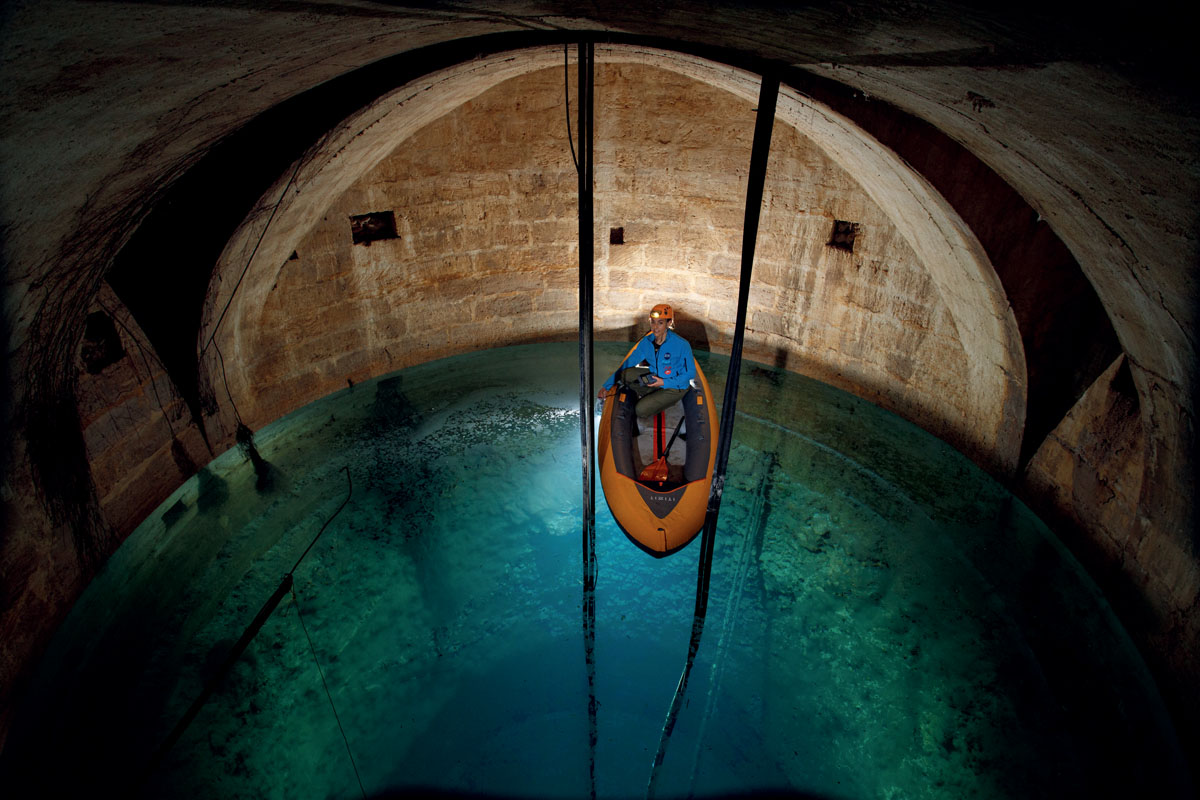[LUM#16] Aquifer! Aquifer! Do I look like an aquifer?
And what if what's essential were actually invisible to the eye? In France, around 75% of the water we consume comes from groundwater. At a time of looming water crises, aren't these great reservoirs, known as aquifers, an underexploited manna? Between ignorance here and ecological risks elsewhere, the sustainable use of aquifers is still a work in progress.

The Amazon, the Nile, the Congo and the Yangtze are all rivers whose gigantic size fascinates as much as it frightens, yet "the water contained in rivers, streams and lakes represents barely 1% of the Earth's stock of liquid freshwater", explains Séverin Pistre, a researcher at HydroSciences Montpellier*. So where can the other 99% of water be found? Under our feet! And more precisely in the earth's crust, which, with a composition approaching 20-25% water, forms the planet's primary freshwater reservoir. A high-quality resource, often far less polluted than surface water, because it's sheltered in what specialists call aquifers.
Folded into karsts
Forget the seas and great underground lakes described by Jules Verne, the term aquifer, literally "water-bearing", refers to rock formations in which rainwater infiltrates and circulates. There are three types of aquifer, depending on the nature of the soil in which they are formed: "There are aquifers where the water penetrates the pores of the rock, such as in gravel or sand", explains the hydrologist, "and others where it circulates in harder rock, through cracks or interstices". While these two types of aquifer are the most widespread in the world, there is a third type that is well known in the region: karsts.
Let's turn back the clock 250 million years. The region is now occupied by a deep ocean. As it withdrew, it left behind thick layers of sediment which, over time, formed limestone rocks. "In these carbonate rocks, which are easy to dissolve, water creates its own spaces, forming drains, underground rivers and springs like the Lez. The Demoiselles and Clamouse caves, for example, were full of water before the drop in water levels," explains Séverin Pistre. Aquifers are also found in China, Vietnam, Brazil... Worldwide, one person in four drinks karst water.
Aquifers, what to do?
So there's water everywhere, and lots of it! But you've got to find it, and to do that, you'd better have a good grasp of geology. In France alone, there are over 30,000 registered boreholes, while in India the figure rises to over 2 million. Drilling varies according to whether the target aquifer is sand or hard rock. " If you have a hard rock known as 'bedrock', you know that the water is contained in cracks, and you can miss it by as much as 5 metres," explains the researcher. In sand or gravel, the water table is generalized and the drilling location may be less precise. If the nature of the soil is not already known, which is quite rare in France today, the geologist can resort to geophysics. One of the best-known methods involves sending an electric current through the soil to measure its apparent resistivity. "If the current travels through rocks containing water, which is conductive, there will be a low resistance. Another possibility is to look for a borehole or well pumping into the same water table, in order to analyze the water. As it passes through a rock, the water will dissolve it and become charged with ions, the analysis of which will reveal the rocks from which they originate. "We have thus observed that the chemistry of the Lez spring changes slightly between winter and summer, when the most superficial part of the water table is depleted and deeper water tables take over.
And they pumped and pumped...
At a time when the world is gearing up for a water crisis, why not make greater use of the liquid manna in our subsoil? The first obstacle is resource conservation, particularly in the case of "mining"-type water extraction from aquifers that can take thousands of years to recharge. This can be observed in arid or semi-arid countries that experienced wetter climates tens of thousands of years ago. "If we exploit them, we know that the water will not renew itself. When the German troops of the Afrika Korps drilled in North Africa, they found artesian wells from which water emerged without having to pump. Today, you have to fetch it from dozens of meters below the surface," continues Séverin Pistre.
Around the Mediterranean, on the other hand, karst aquifers guarantee very rapid groundwater replenishment, thanks to their vast outcrop areas and the porosity of their rocks, which limits runoff. In a context where IPCC scenarios predict an increase in intense rainfall episodes in the region, karsts could thus become very interesting water reservoirs. Provided certain precautions are taken, however, for while the permeability of karsts enables rapid groundwater recharge, it also offers a meagre bulwark against pollution. "In France, politicians are often unfamiliar with groundwater and take little interest in it. This is a mistake: aquifers should be regarded as strategic reserves, and should be part of a real policy to protect the resource, as advocated by the water agencies," concludes the hydrogeologist.
*HSM (UM - CNRS - IRD)
UM podcasts are now available on your favorite platforms (Spotify, Deezer, Apple podcasts, Amazon Music...).